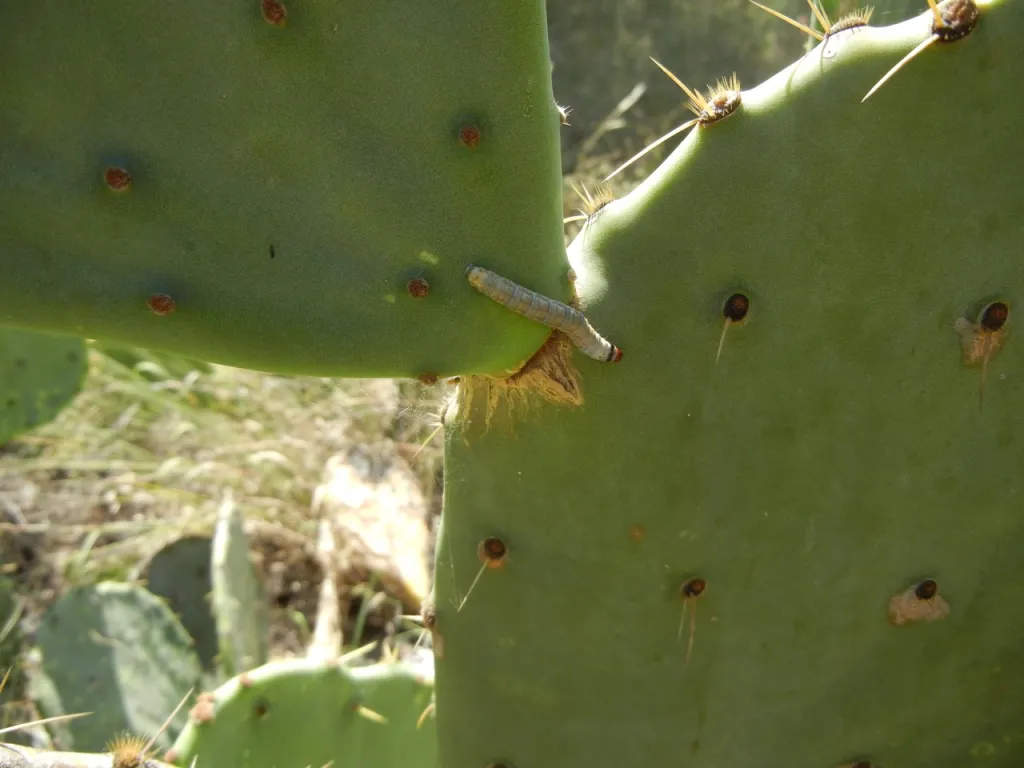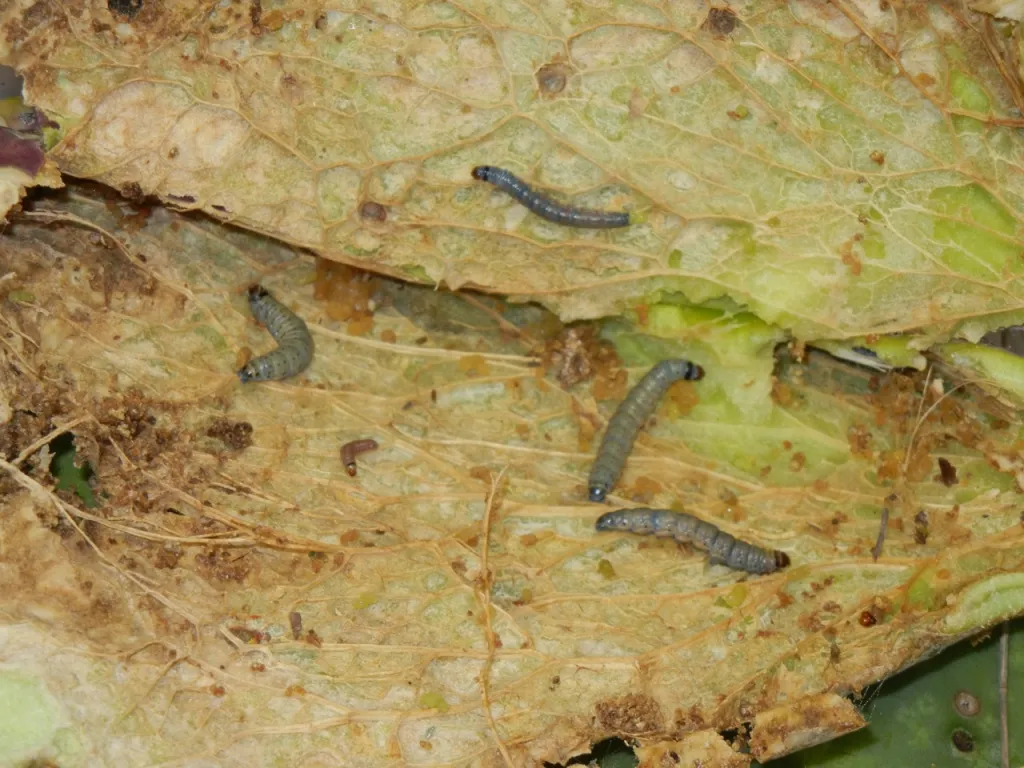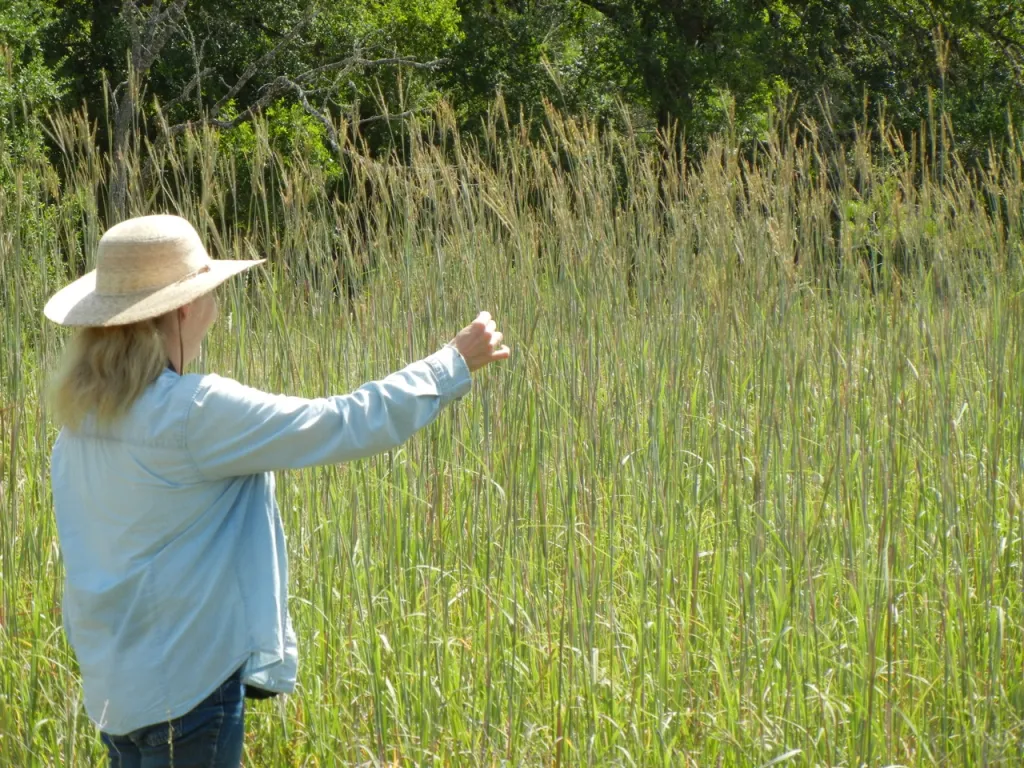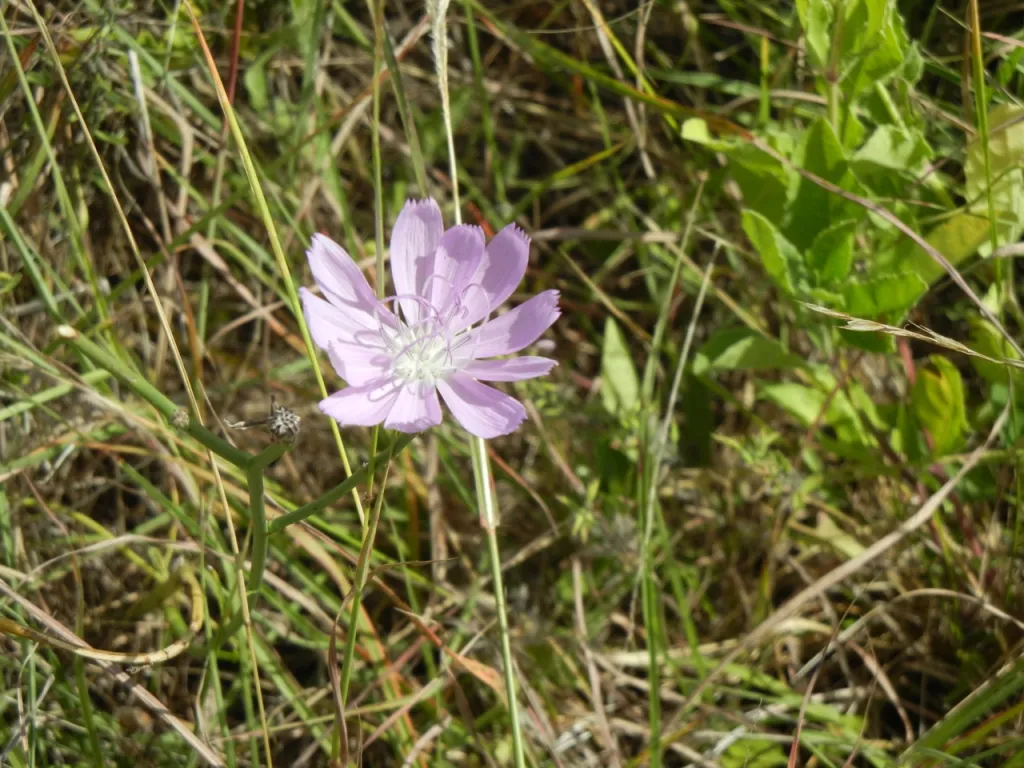By Delmar Cain
Well, they are back and up to their old tricks. This time I intend to find out the name of the rascals and add it to the official list of residents or visitors in Kendall County. To borrow and paraphrase a few of the lines from that Doc Watson song “Muskrat,… they have been lying around eating up all the owners’ prickly pear… but I found out where they been usin’”.

When we moved to Boerne a few years ago, the small acreage where we built our home had several large prickly pear cactus plants at various locations. The plants were 3-4 feet tall and up to 5 feet across. Each spring I enjoyed seeing the variety colors that they produced. Some had beautiful, deep peach blooms, some had yellow blooms with red centers and some blooms were entirely yellow.
Two years ago I noticed that there was a sawdust-like substance on some of the pads of a few plants. I broke off one of the tops and saw a few larvae in the stem. I assumed that this was just another example of a moth and a host plant and didn’t pursue it more than taking a few pictures.

Now there are only two or three of those large plants left. The others, including many on adjoining lots, have been decimated by those moths, which deposit their eggs on the prickly pear. When the larvae eclose (emerge from the eggs), they eat the interior of the pads and excrete their frass (poop) through small holes in the pads leaving a sawdust-like residue. All that remains of those large cactus plants are the skeletal veins of the pads and stems, decaying like fallen logs
The destruction of so many prickly pears has spurred me to action. No, I am not going to spray chemicals to save the cactuses. But I have collected a few larvae with the intent to rear them and determine, if I can, the identity of the moth. In a quick search of the web to determine the identity of the caterpillars, I found that there are at least six prickly pear borer moths, including Melitara prodenialis and Melitara dentata that are native to several states in the United States. Neither of these two moths along with Melitara texana have been documented in Texas. I could find no images of Melitara texana or its larvae.
Surely I am not the only person in Texas that has lost and regretted the loss of a prickly pear, our State Cactus. I can only assume that when others lost that plant, they just decided it was easier to get another. But I am now about naming the culprit. I want to make sure that this moth is listed as being present in Texas and in Kendall County. I will bring you a report if I am successful.

Even so all is not lost. The native plants that grow in our area are survivors. So far each has changed to meet every challenge that the climate, insects and the environment have provided. I have no doubt that the prickly pears will overcome the attack of the moths. In some of those piles of debris, small green pads are visible. It will take a few years, but hopefully those beautiful blooms will return.
On a more pleasant subject, a couple of weeks ago, I had the opportunity to join Donna Taylor, Patty Leslie Pasztor and an out of town botanist on a ride through a small portion of the 500 plus acres of the Cibolo Preserve. As you probably know the Cibolo Preserve is adjacent to the Cibolo Nature Center and has been set aside by its owner, Bill Lende, for restoration, research, education and conservation. What a pleasure it was to take that ride.

Even though we are entering the month of August in a continuing period of drought, albeit with some late spring rain, the condition of the land was spectacular. Grasses of all kinds was at least knee high. The big bluestem, vigorous and in bloom, was 5 ½ to 6 feet tall. The fields were filled with butterflies; and ducks rose from the creek as we crossed. A night heron flew into a tree from its hunting spot along the creek and flew to the same tree when we returned along the same route. Hawks were circling in the sky.
Plants that have passed their bloom time along the county roads were still in bloom in the fields. A skeleton plant, still producing nectar, was visited by a pipevine swallowtail butterfly and narrowly avoided my camera lens. (Ernesto has skeleton plants for sale at Medina Garden Nursery in Medina, if you are interested).
Although native plants have evolved to survive nature’s challenges, loss of habitat, which is mainly our doing, may prove a hill too high. It is a pleasure to see what Bill has accomplished with this vision of the past and oasis of hope.


